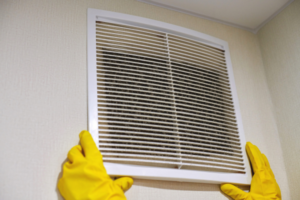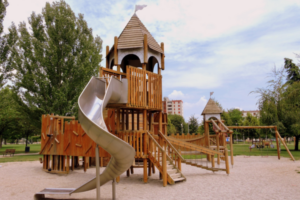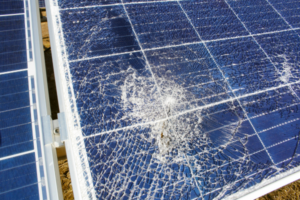Emergency Flood Cleanup in Leander, TX
24 Hour Flood Service
Have you been affected by a flood in Leander? Allow us to be your experienced restoration team. Call now for a free quote!
Frequently Ask Questions
Featured Questions
Flood cleanup costs can vary depending on several factors, but here's the general idea:
Water type: The type of water that caused the flooding significantly impacts the cost. Clean water (from broken pipes) is generally cheaper to address than gray water (from washing machines) or black water (sewage). Black water requires the most extensive remediation as it carries contaminants and poses health risks.
Extent of damage: The total area affected also influences the cost. A basement flooded with a few inches of clean water will be less expensive to clean up than a whole house flooded with several feet of black water.
Needed repairs: Beyond just removing water, the cleanup might involve removing drywall, replacing flooring, and restoring furniture. Extensive repairs will naturally increase the overall cost.
Here's a rough cost average for flood cleanup:
Average: $4,500
Per square foot: $6.75
Tips to get a more accurate estimate:
Contact water damage restoration companies in your area for quotes. They can assess the damage and provide a more specific cost based on your situation.
Check with your homeowner's insurance to see what flood cleanup costs they cover once you know the extent of damage.
- Water depth and duration: A few inches of clean water that receded quickly will require less work than several feet of standing or stagnant water.
- Water type: As mentioned earlier, clean water (broken pipes) is generally easier to handle than contaminated floodwater (sewage backup).
- Affected area: A flooded room presents a different level of cleanup compared to an entire house.
Here's a breakdown of what flood cleanup might entail:
- Removing standing water: This might involve pumping, wet vacuums, or mopping depending on the volume.
- Drying out the area: Encouraging air circulation with fans and dehumidifiers is crucial to prevent mold growth.
- Cleaning and disinfecting: Depending on the water type, surfaces may need cleaning with disinfectants or even removal if heavily contaminated.
- Salvaging belongings: Furniture, carpets, and other belongings may need cleaning, drying, or unfortunately, discarding.
- Structural repairs: In severe cases, drywall replacement, flooring repairs, or even structural work might be necessary.
Prompt action is key to minimize further damage and make the cleanup process less overwhelming. For extensive flooding or contaminated water, professional help is recommended to ensure proper restoration and avoid health risks.
The way you remove water from a flooded room depends on the amount of water and the tools you have available. Here's a general approach, prioritizing safety:
Safety First:
Electricity: Shut off the electricity at the breaker box if there's any risk of electrical wires being submerged.
Protective Gear: Wear gear like rubber boots and gloves to avoid electrical shock and contamination from dirty floodwater.
Removing the Water:
Small amounts of water: For shallow puddles or spills, use towels, mops, or a wet/dry vacuum cleaner to remove standing water.
Larger volumes: For deeper water, consider these options:
Wet/dry shop vacuum: This is a powerful tool for sucking up large quantities of water. Make sure to consult the manual for proper use with floodwater and dispose of the collected water outside, far from the house foundation.
Pump: A sump pump can be effective for bigger floods, especially in basements. If using a sump pump, be aware that rapidly pumping out large amounts of water in basements can cause structural issues due to pressure changes in the surrounding soil. Gradual pumping is recommended.
Water removal service: For extensive flooding, consider professional water removal services. They have specialized equipment to handle large volumes of water efficiently.
Additional Tips:
Promote drying: Once the standing water is gone, focus on drying out the room to prevent mold growth. Open windows and doors for ventilation, and use fans and dehumidifiers to remove moisture from the air.
Salvage belongings: Move furniture to dry areas and elevate them if possible. Area rugs and carpets may need professional cleaning or drying.
Document the damage: Take pictures or videos of the flood damage for insurance claim purposes.
Get more help: When in doubt about your safety or the extent of the damage, it's always best to call a professional water damage restoration company. They can assess the situation, safely remove the water, and begin the drying process to minimize further damage and health risks.
Flood water removal from carpet involves a two-pronged approach: extracting as much water as possible and then promoting drying to prevent mold growth. Here's a step-by-step approach:
Extracting Water:
Remove furniture: Move any furniture off the wet carpet to allow for better airflow and water removal.
Blot up surface water: Use clean, absorbent towels or rags to soak up as much standing water as possible. Keep flipping the towels to a dry area as they get saturated.
Wet vacuum: For deeper-seated moisture, use a wet/dry vacuum cleaner specifically designed for flood cleanup. Carefully run the nozzle over the carpet in sections, extracting as much water as possible. Avoid using a regular vacuum cleaner as it can short circuit and damage the machine.
Promoting Drying:
Air circulation: Open windows and doors to create cross-ventilation and allow fresh air to circulate and help evaporate moisture.
Fans: Set up fans pointed at the wet carpet to increase air circulation and speed up drying. Box fans work well for this purpose.
Dehumidifier: A dehumidifier is a powerful tool for extracting moisture from the air, which significantly aids the drying process. If you don't own one, consider renting one from a hardware store.
Additional Tips:
Baking soda: For additional odor control and moisture absorption, sprinkle baking soda on the damp carpet and leave it for several hours before vacuuming it up.
Carpet pad: If the flood water reached the carpet pad and it's heavily saturated, consider removing it to aid drying and prevent mold growth. Replacing a wet carpet pad is generally more cost-effective than trying to salvage a moldy one.
Professional cleaning: For extensive flooding or heavily contaminated water, professional carpet cleaning services are highly recommended. They have the equipment and expertise to properly clean and dry the carpets, minimizing the risk of mold growth and ensuring a thorough restoration.
Act quickly: The faster you take action to remove water from the carpet, the easier it will be to dry it completely and prevent mold growth.
Clean water vs. contaminated water: The steps above are generally applicable for clean water (broken pipes). If the flooding involved sewage backup or other contaminated water sources, professional cleaning and restoration are crucial to ensure proper sanitation and avoid health risks.
Who Offers the Best Flood Cleanup Service in Leander?
Living in Leander, we know floods can happen. That’s people trust All Nation Restoration for fast and reliable flood cleanup. Our IICRC-certified technicians understand the urgency of flood damage and are available 24/7 to get you back on your feet.
We prioritize customer service, ensuring a smooth restoration process from water extraction and drying to working with your insurance company. Committed to quality and with a proven track record, we can help get your Leander home back to normal.
This Is Why Our Community Keeps Calling Us
- 24/7 Emergency Response: Floods don’t wait for convenient hours. Our emergency services are available 24/7, so you can reach us right away to minimize water damage and prevent mold growth.
- IICRC-Certified Technicians: Our team isn’t just experienced, they’re certified. Each technician holds credentials from the Institute of Inspection, Cleaning and Restoration Certification (IICRC). They have the knowledge and training to handle your flood issue according to industry best practices.
- Customer-Centered Restoration: We know flood damage is stressful. That’s why we prioritize clear communication throughout the process. Our team will work closely with you to make sure everything goes according to plan.
- Leander’s Trusted Flood Cleanup Experts: For years, Leander homeowners have trusted All Nation Restoration to restore their homes after flood damage. Our proven track record and local expertise prove we know exactly what it takes to help you in the best way.
We're the Best Choice for Cleanup Services
Flooded in Leander? We can help you get back on your feet.
Seeing your precious belongings soaked and your floors flooded can be overwhelming. That’s why we’re here to help – 24/7.
Here’s why Leander residents choose All Nation Restoration for flood cleanup:
Advanced Drying Techniques: Our use of advanced drying technology can significantly accelerate the drying process compared to traditional methods. This reduces the overall restoration time.
Content Restoration Specialists: Restoring flood-damaged belongings is our specialty. We handle furniture cleaning and drying, document restoration, and working with specialists for electronics and valuables. It’s common to worry about more than just the structure of your home – damaged possessions can affect you emotionally as well.
Insurance Claim Assistance: Our experience in working with insurance companies to navigate the claim process for flood damage is second to none. This is often a frustrating experience for homeowners. We offer assistance with paperwork, estimates, and communication with your insurance provider to find the best resolution for you.
Don’t wait! Call us anytime at (512) 934-8180 and let us take care of the mess while you focus on what matters most – your family and peace of mind.
Schedule Free Assessment
Reach out to our team 24/7 and we'll be in touch shortly
Insight
Latest Articles

It’s no secret that our climate has been changing. Whether we’re sweating through late spring heatwaves or watching rainfall pound our backyards in what feels

In cities where space is limited and buildings are stacked like puzzle pieces, there’s a common but often ignored threat lurking inside our homes. The

Most people don’t give a second thought to mold when they think about outdoor play areas and recreation zones. After all, these are open-air environments,

As solar power continues to grow throughout neighborhoods and cities, more homeowners and businesses are placing their trust—and their wallets—into rooftop panels and ground-mounted solar

